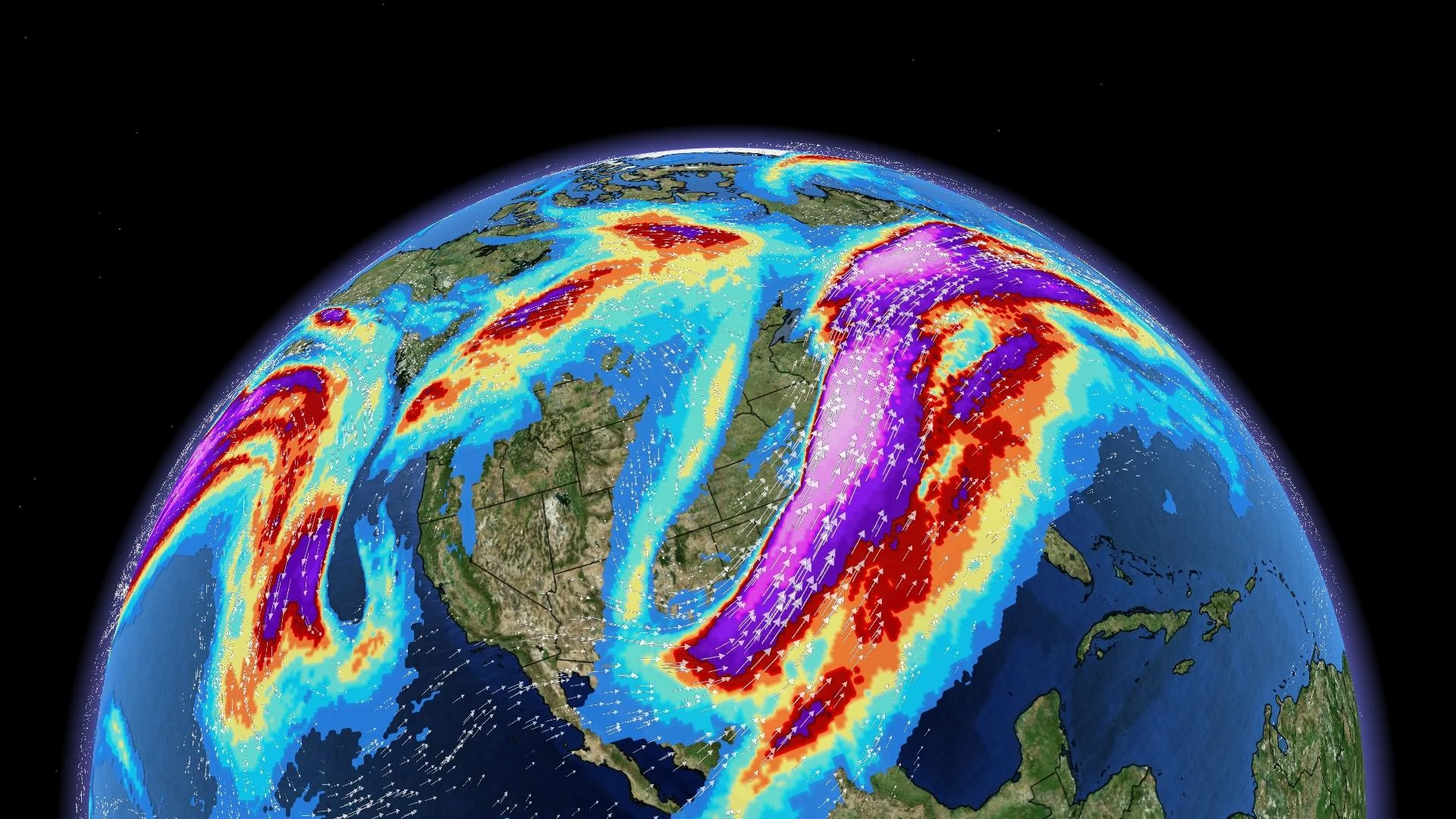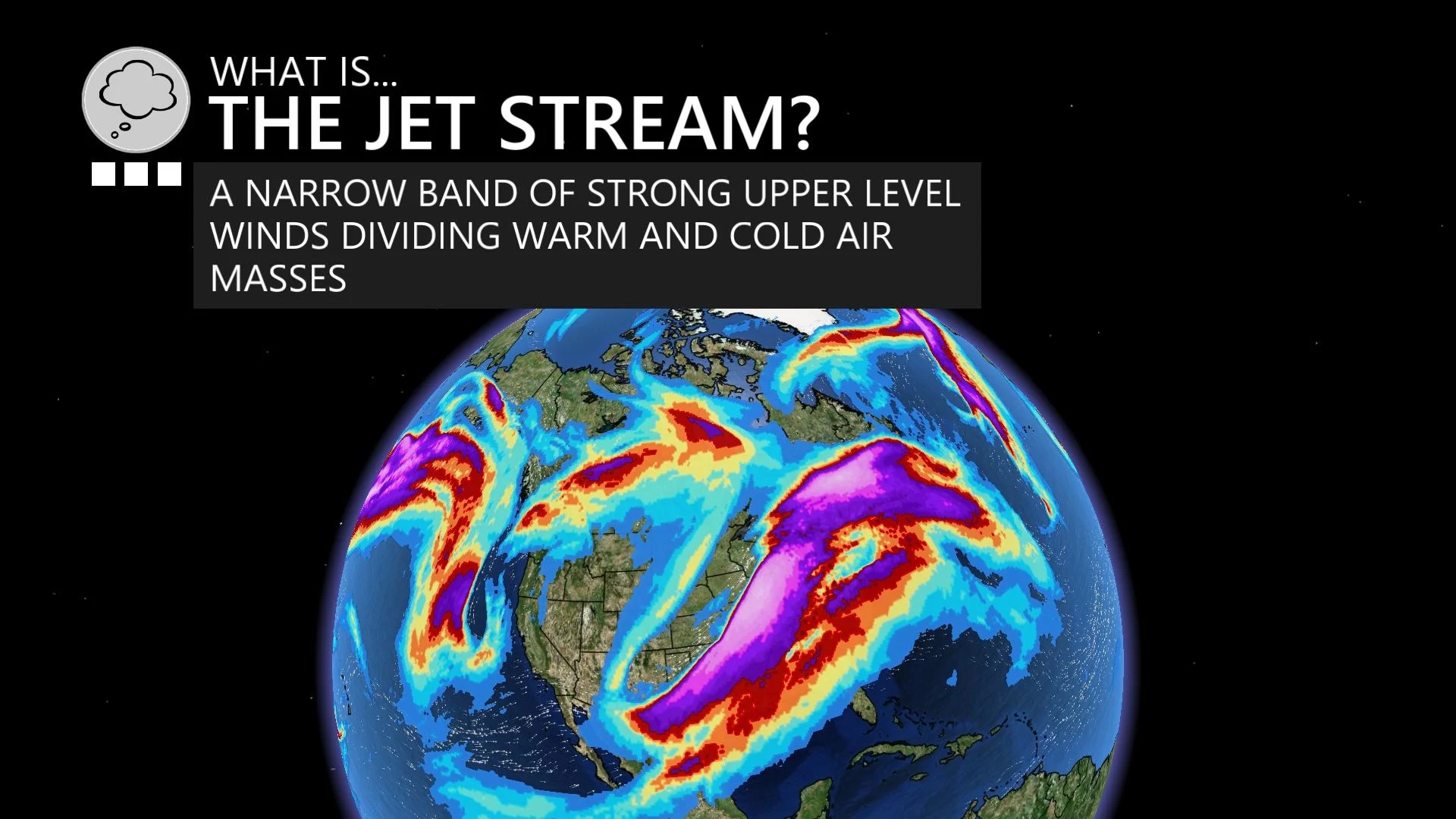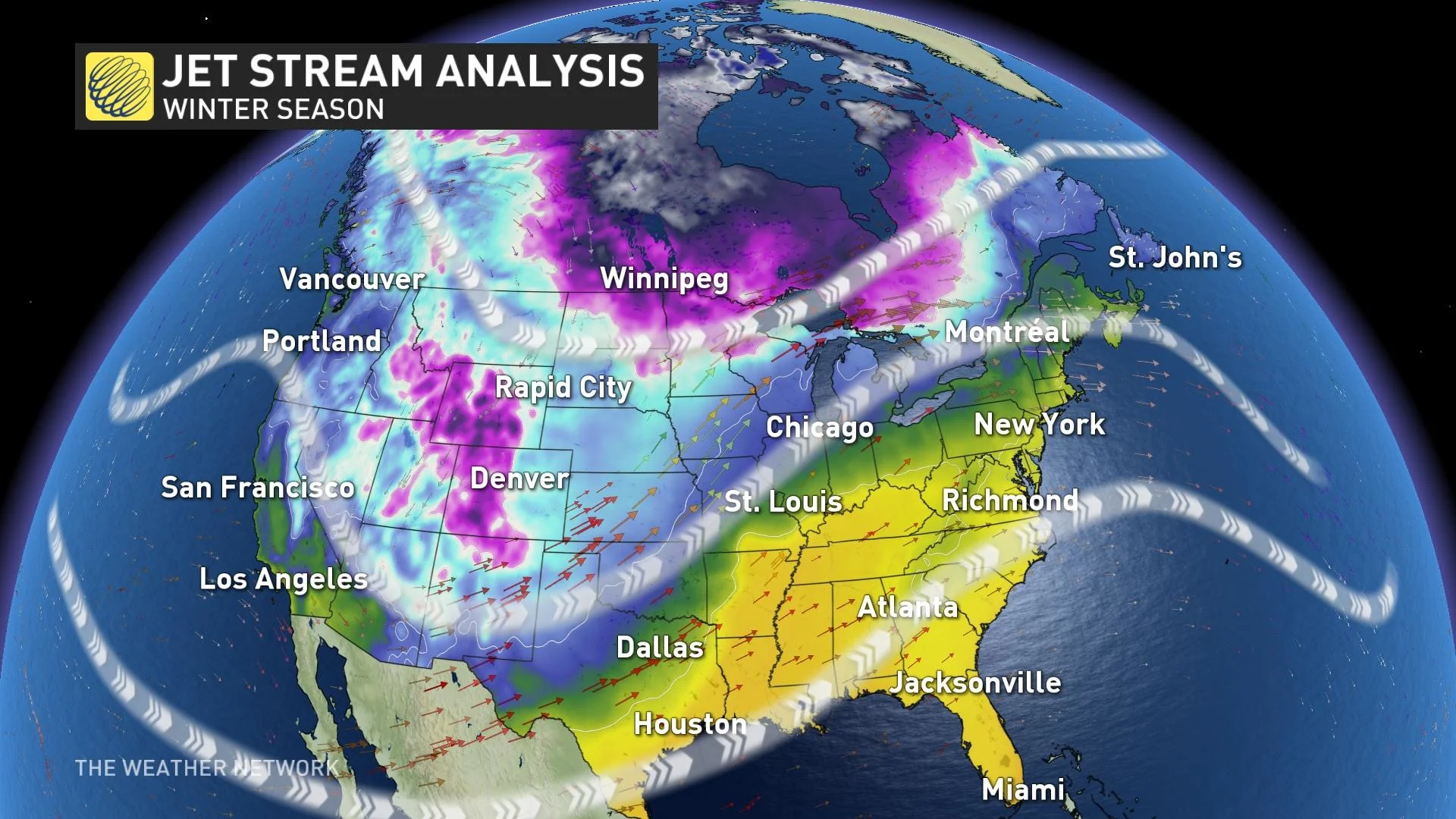
Jet streams can bring Canada wild winters and steamy summers
The jet stream is responsible for some of the wildest weather we can experience across Canada.
A band of winds cruising along at more than 200 km/h is responsible for most of the weather we experience on a daily basis.
Jet streams are one of the world’s true wonders. There isn’t just one jet stream—both the northern and southern hemispheres each have several jet streams that dictate overall conditions around the globe.
But there’s a catch: they're not consistent throughout the year. Jet streams ebb and flow with the seasons, growing stronger in the winter and weaker in the summer.
DON’T MISS: Six annoying ways weather forces airlines to cancel your flight
Jet streams push and pull enormous amounts of air
A jet stream influences our weather by pushing and pulling on the air beneath it.
Winds don’t race around troughs and ridges in a straight line—they fan out (diverge) as they zip through the base of a trough, and crash together (converge) as they slow down rounding the top of a ridge.
Divergence creates a void that pulls air up from the surface, giving rise to sprawling low-pressure systems that can wreak havoc on the ground. Convergence forces air to sink down toward the ground, leading to those clear, cozy days we cherish in between the storms.
Jet streams change with the seasons
This cycle isn’t consistent throughout the year.

Overall weather patterns depend on the seasonal strength of the jet stream, which is why we see picturesque lows swirling across Canada in the wintertime like atmospheric cinnamon buns, but hardly ever see these vast systems arrive in the heart of the summer.
The jet stream itself exists because of temperature differences between the tropics and the poles.
Warm air rising out of lower latitudes flows toward higher latitudes in nature’s everlasting efforts to balance out the atmosphere. As the air sinks, the Coriolis force causes the air to turn horizontally and blow parallel to the ground, creating these relatively narrow bands of wind.
There are several of these large-scale circulations in each hemisphere that create several different jet streams. The subtropical jet stream usually drapes across the southern U.S., while the polar jet stream typically finds its home over Canada and the northern U.S.
WATCH: How the jet stream's movement impacts Canada's weather
Seasonal variations in the jet stream are driven by seasonal temperature differences here on the ground.
During the summer, there’s not a dramatic difference in temperatures between the tropics and, say, southern Ontario—it could be 30°C in Miami and Toronto on the same day, after all.
But in the middle of winter, there are often gigantic temperature gradients between northern and southern parts of North America, sometimes on the order of 70 degrees or greater.

READ MORE: How Colorado lows and Texas lows affect our weather in Canada
As a result, summertime jet streams are much weaker than the jet streams we see in the colder months.
Smaller features drive much of our summertime weather—think lake-breeze thunderstorms, squall lines, and pop-up showers generated by daytime heating. The biggest impact these upper-level patterns have on our summertime weather is when mammoth ridges foster unbearable stretches of heat and humidity.
Compare that to so much of the weather we see in the winter, which is directly driven by the jet stream.
Colorado lows and Texas lows racing north of the border can affect half of Canada at once, which is no small feat given the vast size of the country. Some of the most memorable storms in modern history were nor’easters that roared up the East Coast.











